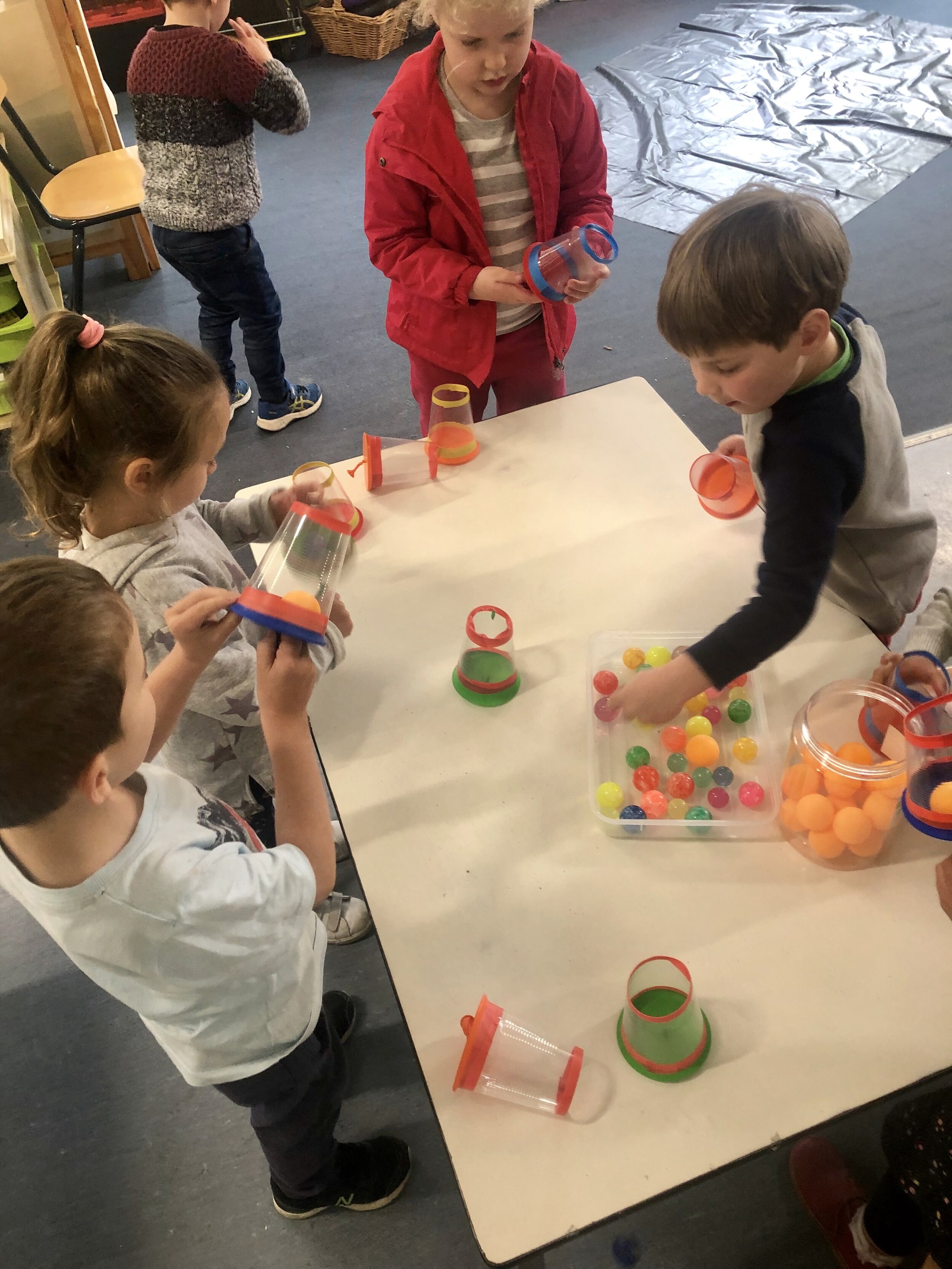PUSH, PULL, AND MOTION









Investigate what makes objects move through multiple hands-on activities, including;
Discuss - how do objects move?
Demonstrate - push and pull forces.
Investigate - push and pull forces by
sorting toys as moved by 'push' or 'pull' forces,
using air to push,
gravity to pull,
and balls to transfer energy
Discover - by experimenting
how friction affects motion,
how mass (weight) affects motion,
Explore - a variety of push and pull forces using
wind sail cars,
rocket balloons,
magnets,
gravity tilt maze,
static electricity,
wobbly balloons,
tuning fork sound vibrations,
tornado tubes
Launch - objects with potential energy using
catapults to launch pom poms,
balloon poppers to launch ping pong balls,
and bounce springs
Experiment - with marble roller coasters!
and more...
MAKE A BOOKING NOW →
CURRICULUM LINKS;
VEYLDF Learning Outcomes
Outcome 1, Identity - through hands-on science activities, children are supported to act with self-confidence and autonomy, seeking and accepting new challenges, and demonstrating initiative by asking questions.
Outcome 2, Connection – science workshops provide an opportunity for a shared group experience, where everyone participating is included and can contribute. Children often work with partners to share science activities, strengthening their connection to classmates. Science workshops reveal to children the science they use in daily life, and connect them to the bigger world of scientific knowledge.
Outcome 3, Wellbeing - inquiry-based science activities encourage perseverance and resilience in the face of new learning situations. Children experience wellbeing and a sense of achievement through hands-on learning.
Outcome 4, Learning - science workshops encourage children to be curious and enthusiastic about their learning. When given opportunities to generate questions about situations and phenomena, make predictions, carry out courses of action and evaluate results, children are expanding their scientific thinking skills. This creates learning dispositions that are essential for 21st century children, and underpin all future learning.
Outcome 5, Communication – science workshops introduce new vocabulary through scientific language. Children express and share their ideas. Scientific communication includes children’s recording/documenting of their findings.
Victorian Curriculum Content (F-2)
People use science in their daily lives (VCSSU041)
The way objects move depends on a variety of factors including their size and shape: a push or a pull affects how an object moves or changes shape (VCSSU048)
Respond to and pose questions, and make predictions about familiar objects and events (VCSIS050)
Participate in guided investigations, including making observations using the senses, to explore and answer questions (VCSIS051)
Compare observations and predictions with those of others (VCSIS054)
